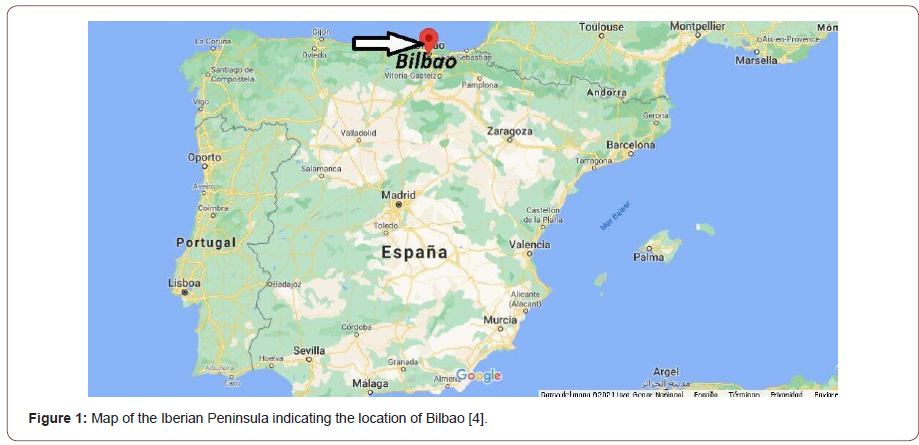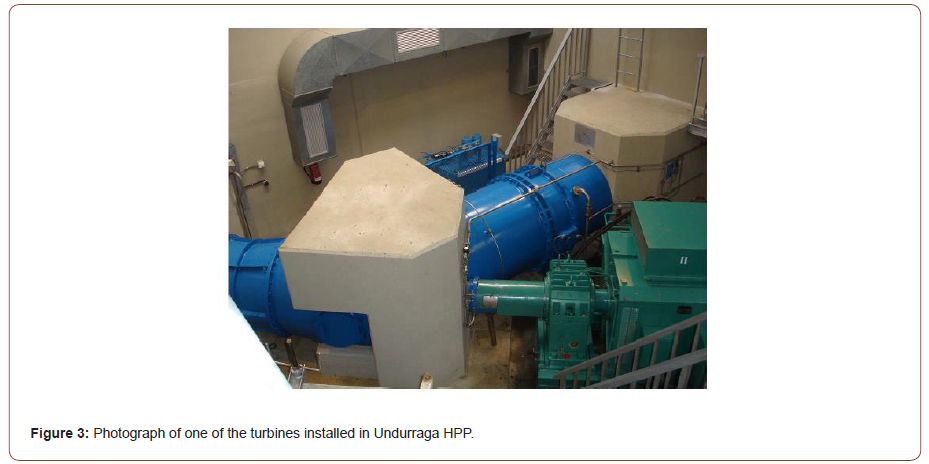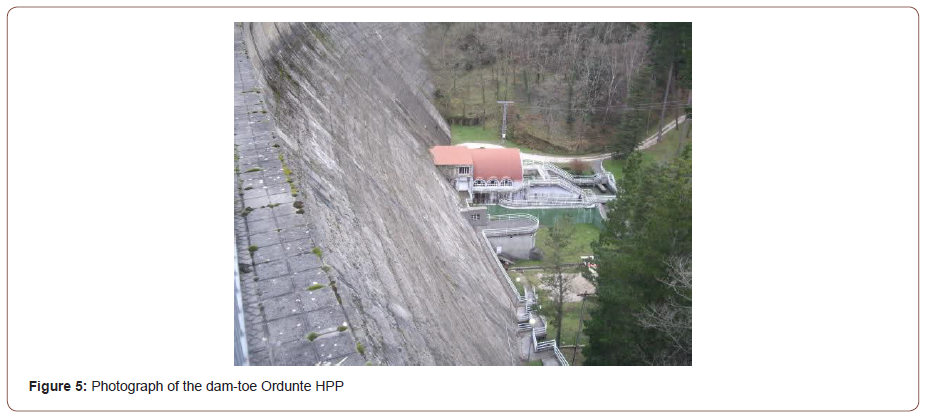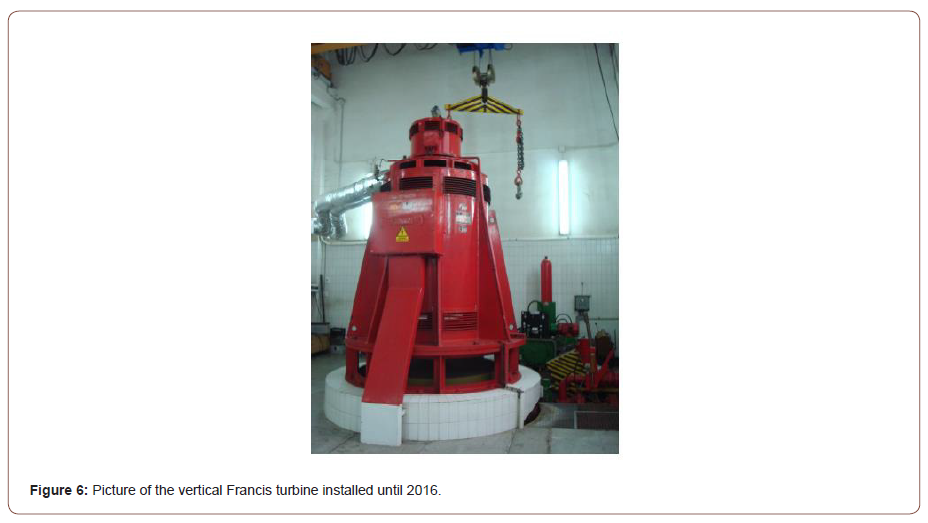Authored by Alegría N*,
Abstract
There is a need of planning the compatible uses for water. The water supply to Bizcay has its origin in the basins of the watersheds of the north (between 25 % and 40 %, depending on the rainfall of the year), and in the basins related to the water transfers from the headwaters of River Zadorra and River Cerneja (between 75 % and 60 %), both tributaries of River Ebro. These two resources count on an energy generation system each. This way the energetic use and the domestic use are brought into line, together with the recreational and regulation uses of the reservoirs of the headwaters.
Keywords:Compatible uses; Hydroelectric energy; Electric generation
Introduction
The city of Bilbao is located 15 km upstream from the Cantabrian coast, in the province of Bizcay that belongs to the Community of the Basque Country. As shown in Figure 1, Bilbao is located in the north of the Iberian Peninsula, between mountain and sea.
Due to its orography, the province of Bizcay has the particularity of not having reservoirs that can supply water to the population [1-3]. Therefore, there has never been a chance for accumulating water in large quantities in the province of Bizcay in order to enable the development of its population (Figure 1).

Focusing on Bilbao and its urban area, during the 50s-60s two very important concessions were authorized to carry out two water transfers. This way, the necessary water supply of this area was guaranteed: the water transfer from River Zadorra that provides approximately 70 % of the water needed from the province of Alavaand the rest from the water transfer from River Ordunte located in the province of Burgos [5].
In addition, the reservoirs in the headwaters promote the quality of life of the population of its surroundings by increasing the recreational uses and also by increasing the capacity for flood abatement in the zone in case of intense precipitation. The reservoirs of River Zadorra keep 20 % of their total volume for flood abatement operations, whereas the reservoir of River Ordunte has am emptying system that works by overflow and can be filled up to its whole capacity.
In the last decades, the consciousness-raising of the population has stimulated the compatible uses of water and, as a result, the same water that reaches the homes is previously used to produce hydroelectric energy taking advantage of the elevation differences of the masses of water.
In this particular case, water that comes from the water transfer of River Zadorra runs through 3 turbines in different Hydraulic Power Plants (HPP): the underground Barazar HPP, the dam-toe Undurraga HPP and, finally, Bolueta HPP of that uses surplus water. On the other hand, water that comes from River Ordunte runs through 2 turbines in different HPP-s: the dam-toe Ordunte HPP and Sollano HPP.
Discussion
Barazar HPP
This HPP was designed and built up in the 50s. It was a very complex construction as long as its underground cavern (L 90 m x H 30 m x W 17.5 m) gets into a depth of 200 m.
Initially, the installation of 4 Francis turbines was foreseen, but only 2 turbine-generator groups were installed in the end. Each group (see Figure 2) had a Francis turbine of 42160 kW rotating at 500 RPM. Besides, a Pelton turbine coupled to a generator of 1000 kVA was also installed for self-supply.
This HPP belongs to the Company Iberdrola S.A. that manages its operation under the management of the Hydrographic Confederation of River Ebro [5].
The characteristic data of the power plant are a gross head of 328.6 m and a flow rate of 15 m3/s. The Bilbao Bizkaia Water Consortium (CABB) establishes the total volume of water that needs to be transferred daily, so that the total operation hours of the turbines can be defined. The average value of this operation period is close to 4 hours per day (Figure 2).

Undurraga HPP
This HPP is a toe-dam power plant that was designed and built up in the 90s. However, the reservoir where it takes the water from dates from 1959 [6].
The facility has 2 semi-Kaplan turbines with horizontal shafts as shown in Figure 3. Each turbine provides a nominal power of 1275 (kW).
The characteristic data of the power plant that belongs to the CABB are a net head of approximately 20 m and a flow rate of 2.5 m3/s with a continuous operation for one of the turbines. The other turbine only works when there is a surplus flow rate that takes place only during 60 days in a year in average (Figure 3).

Bolueta HPP
This HPP was built up in 2018 and has 2 Francis turbines with horizontal shaft. It belongs to the CABB and is able to run its turbines up to a flow rate of 4.50 m3/s. It takes advantage of the elevation difference that exists between the water treatment plant of Venta Alta (elevation +173.0 m) and Bolueta HPP where the turbines are installed (elevation +28.1 m) [7].
This HPP will work an average of 42 days during the year. Figure 4 shows the plan view of Bolueta HPP and the storm tank that is located beside (Figure 4).

Ordunte HPP
This HPP was designed and built up in the 50s. It was operated by the Energy Agency of the Basque Government (EVE) in the past. At this moment Bioartigas S.A. is responsible of its operation [8].
The HPP has a Francis turbine with a horizontal shaft. The characteristic data of the power plant are a maximum gross head of 40 m with a net head of 38.28 m, a flow rate of 1.5 m3/s operating continuously. The nominal power is 535 kW with a rotation speed of 750 RPM. Figure 5 shows the location of the dam-toe power plant (Figure 5).

+Sollano HPP
This HPP was designed and built up in the 60s and belongs to the City Council of Bilbao.
The characteristic data of the power plant are a net head of 93.12 m, a flow rate of 1.2 m3/s operating continuously.
Initially a vertical axis Francis turbine was installed with a power, or 1476 kW coupled to a synchronous generator of 1875 kVA, 1000 RPM, 5000 V and 50 Hz and, in parallel with the network at 30 kV by means of a transformer with a power of 2000 kVA. The old vertical axis Francis turbine is shown in Figure 6. In 2016 it was replaced by a horizontal axis Francis turbine fed by means of a spiral case with wicket gates [9] (Figure 6).

Conclusion
The coordinated exploitation of the water supply with the operation of the aforementioned hydroelectric power plants provides a hydroelectric generation that ranges from 100 GWh to 120 GWh for one year, depending on the pluviometry. This electricity generation helps to meet the increasing electricity demand.
According to the new energetic tendencies of the hydraulic field, the mini hydraulic generation is now being proposed to be incorporated inside the supply networks by means of hydrokinetic turbines. This way, water will run more times through different turbines before being consumed and more energy will be produced.
To read more about this article...Open access Journal of Hydrology & Meteorology
Please follow the URL to access more information about this article
To know more about our Journals...Iris Publishers
To know about Open Access Publishers





No comments:
Post a Comment